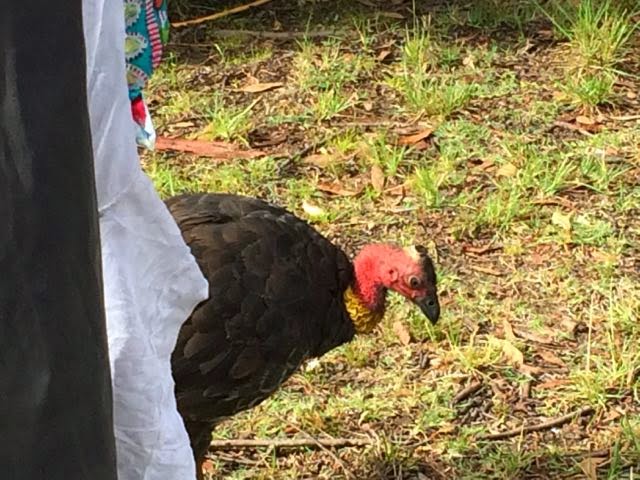We stayed at Lane Cove National Park in Sydney where we have stayed on a number of occasions now. It is a great spot, close to the city and walking distance to a railway station. There are also a number of shopping centres close by. I am not going to say much about Sydney itself..... would rather talk about Lane Cove.
 |
| Our site amongst the gum trees |
Governor Phillip was the first European to lead an expedition into the Lane Cove River Valley not long after the arrival of the First Fleet in January 1788. The Lane Cover River was further explored by Lieutenant Ralph Clark, along with three convicts. They rowed some 10 kms up the river and recorded that they saw Aboriginal people.
Around 1814, William Henry began farming on land north of Blue Gum Creek, adjoining the Lane Cove River, near the present Fullers Bridge. He lived at his farm “Millwood” from 1814 to 1850 and that is what is now known as the Fuller picnic area. Governor Bligh had promised William Henry 1000 acres in the area but apparently because of the Rum Rebellion, the grant was not officially recognised until 1860, just two years before his death. By 1828, Henry had sold his grant and by 1890 it had become market gardens.
Must have been great to just have been granted land without having to pay for it…….
After Governor Phillips expedition to Lane Cover, came Botanist George Caley in 1805. He travelled from John Macarthur’s farm at West Pennant Hills and was impressed by the stands of blackbutt and blue gums.
Timber getters were also attracted to the area and began illegal operations in the 1820's. They camped out, lived on salt beef and damper and felled giant trees and dug great saw pits. Bullock drays and jinkers (a light two wheeled cart) carried logs along the ridge towards the city, down Fiddens Wharf Road to reach Lane Cover River.
There were many land grants and families who farmed in the area, the largest holding being the property belonging to Thomas and Maria Jenkins (William Henry’s granddaughter). Not only was their property a large one, so to was their family…they had 13 children. The Jenkins property was purchased in the 1930’s for inclusion into the park.
 |
| One of the cabins, nestled in the trees. |
 |
We like the area, all that space and greenery…it is a bit of peace surrounded by the hustle and bustle of the metropolis that is Sydney.
 |
| You can just see the skyline of the suburb of Chatswood through the trees. |
 |
| Electricity from the Sun...10KWh in size, it produces enough power to energise 2-5 average homes and save approximately 15 tonnes of carbon emission from the atmosphere each year. |
Until next time Sydney.....



No comments:
Post a Comment
Thank you reading about our journey and for your comments. I read all comments but may not aways be able to respond.